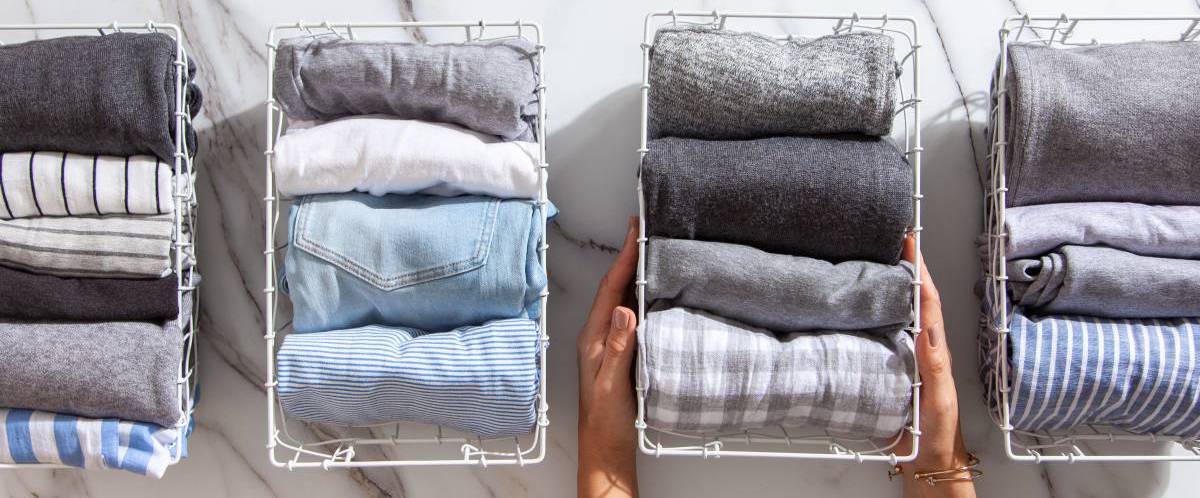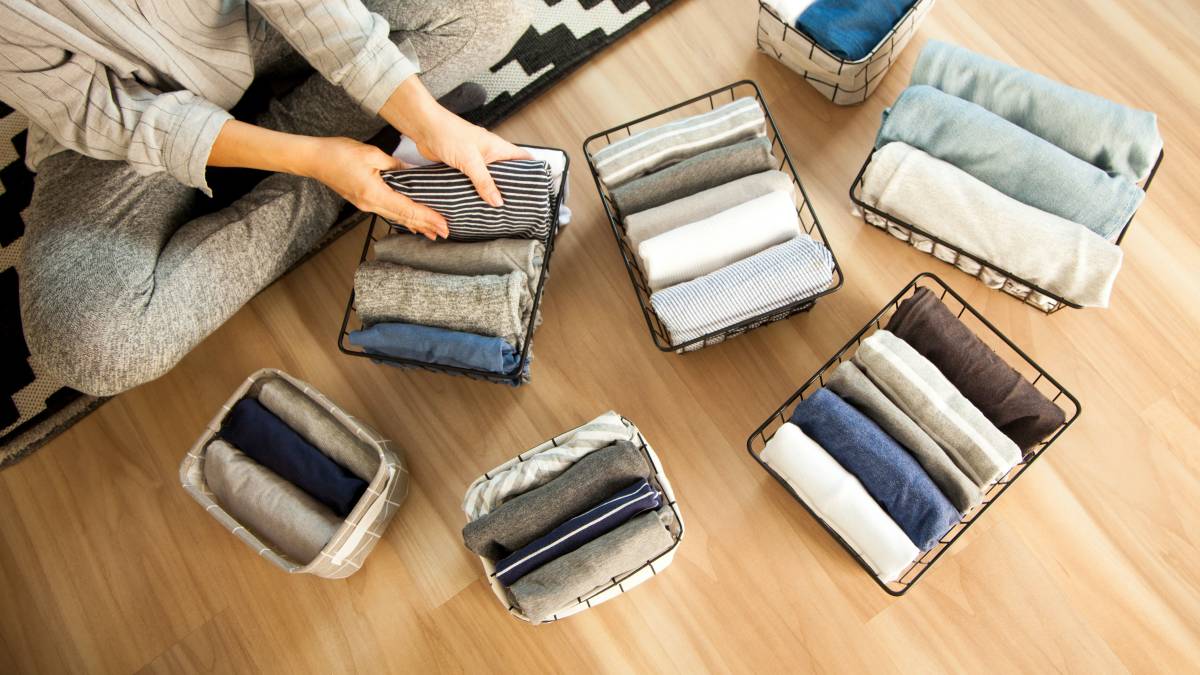- Home/
- Guides/
- Home Organizer/
- How to Organize Your Kitchen Pantry
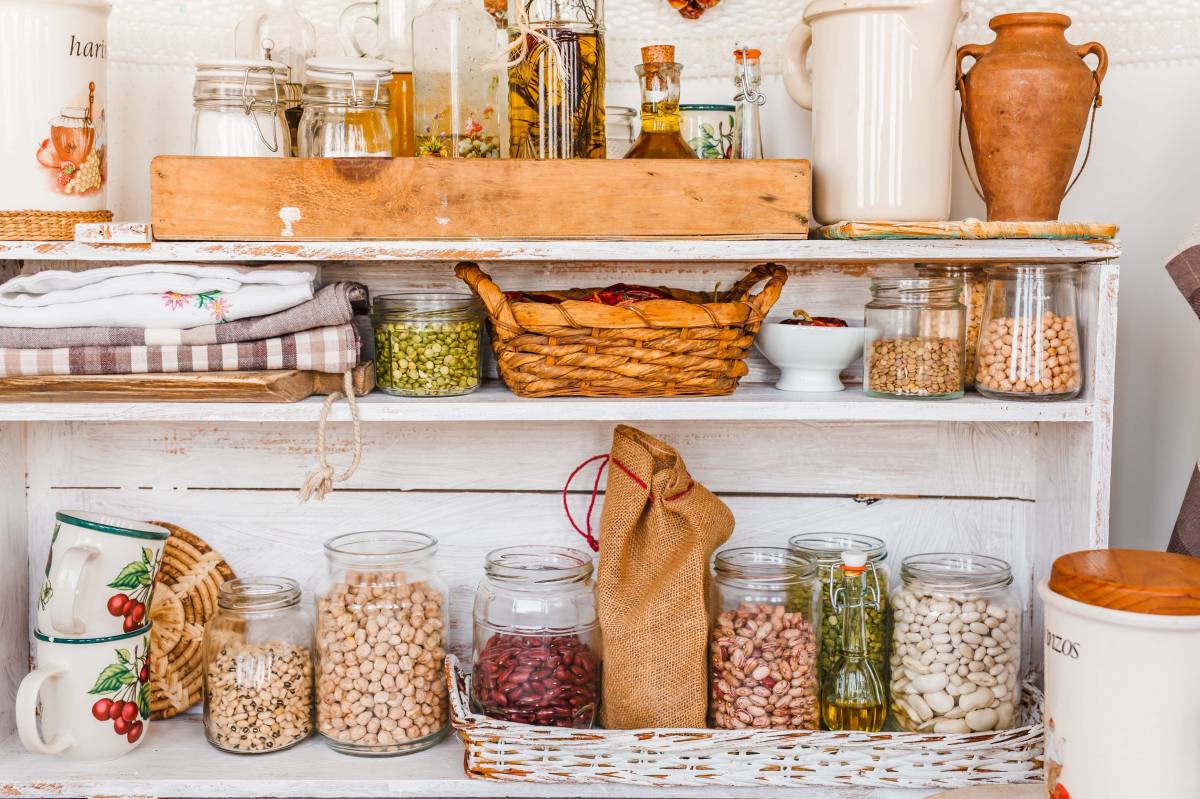
Mastering pantry perfection: Tips for organizing your kitchen pantry
Learn the best way to organize a pantry and make your kitchen the heart of your home.
Hire a pantry organizerLast Updated on
Are you longing to have a spotless, shiny, and systemized kitchen? One that will make prepping meals and welcoming guests a little like a walk in the park? Look no further! The key to achieving your dream kitchen is learning how to organize a pantry.
It’s the best place to start because it holds many supplies. Besides food, you also have pots, pans, utensils, and maybe some cleaning supplies. Left unorganized, it can be quite a jungle. Luckily, this article covers many pantry organization tips just for you!
Easy-to-follow pantry organization ideas
-
Determine your needs.
The best way to organize a pantry is to base it on your needs. It will look a little different for everyone. You may want to make it childproof if you have kids at home. Or perhaps, things need to be put in a certain way because you have limited space. Do you want a full-on kitchen pantry renovation? Or would you like to install several new pantry shelves?Consider what you and your household need to make kitchen pantry organization work. List those needs to prepare the necessary materials and kickstart organizing correctly.
-
Purge your pantry.
One of the most dreaded parts of organizing a kitchen pantry is going through every item. It sounds gruelling, but you must check everything to know which stays or gets thrown away. You can start your purge by removing everything—empty all your cabinets and drawers, including your fridge.
Check expiration dates and discard out-of-date goods. If you have too many appliances, especially those you don’t use, you may choose to donate or sell them. It’s also best to eliminate any other products you no longer need to free up more space.
While all the items are out, clean up every nook and cranny for a spotless finish. Don’t forget to inspect for moths and molds and treat those areas if necessary. It’s a good idea to wipe them down with a disinfecting or multi-purpose cleaner to keep them sanitized and ready to store your stuff.
-
Label everything.
A crucial step in starting and keeping an organized pantry is labelling. Whether you’re using coloured or clear containers, label them. This will save you and everyone in the house time and effort when looking for something in the pantry. You can use markers to name your pantry essentials or stick a label for each container.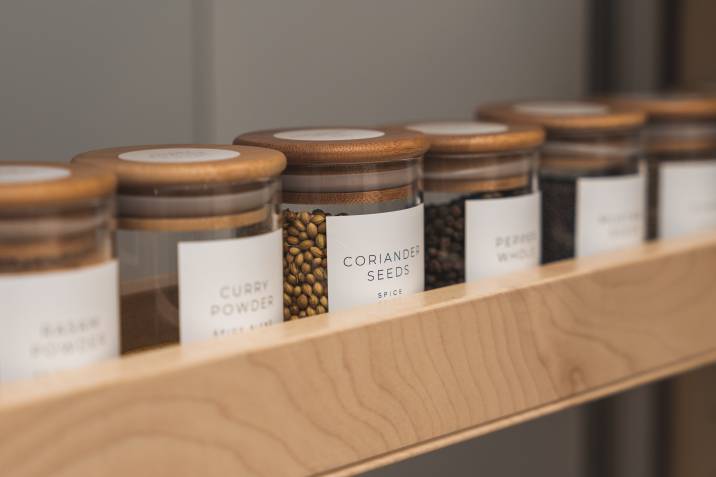
But if you’d like to grab and purchase matching containers for your entire pantry, go for it! Many containers in the market come with blank or custom labels, suiting any style and achieving extra appeal. Plus, filling up new storage jars with spices, cereal, grains, and other food items can be a fun and satisfying experience.
One more idea is to include the expiration dates on the labels so that you can be quickly reminded of them. You can also add labels to trash and recycling bins in your kitchen area. While you’re at it, feel free to include category labels on shelves for faster navigation in your pantry.
-
Use containers.
Another way for you to organize your pantry is through containers. These can be jars, cans, bins, baskets, or storage solutions. Whether you’re storing wet or dry ingredients, including utensils, ensure your containers are tightly sealed to keep what’s inside clean. This will also keep food fresh and last longer.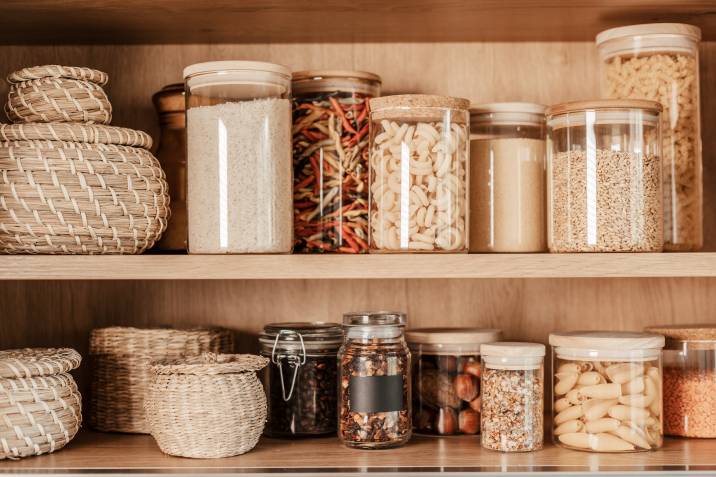
Moreover, consider using a Lazy Susan to maximize space and keep your pantry tidy. This simple food storage hack is perfect for condiments and canned foods. Add one near your kitchen bench to keep your favorite snacks handy.
-
Use vertical space.
If you have a small pantry space, think vertical. Don’t be scared to go beyond eye-level storage. It’s a handy pantry organizing idea because it gives extra room to add more shelving, baskets, and cabinets. You can put away small appliances or items you barely use on the top shelf, while essential and bulky appliances can go on low shelves for easy access.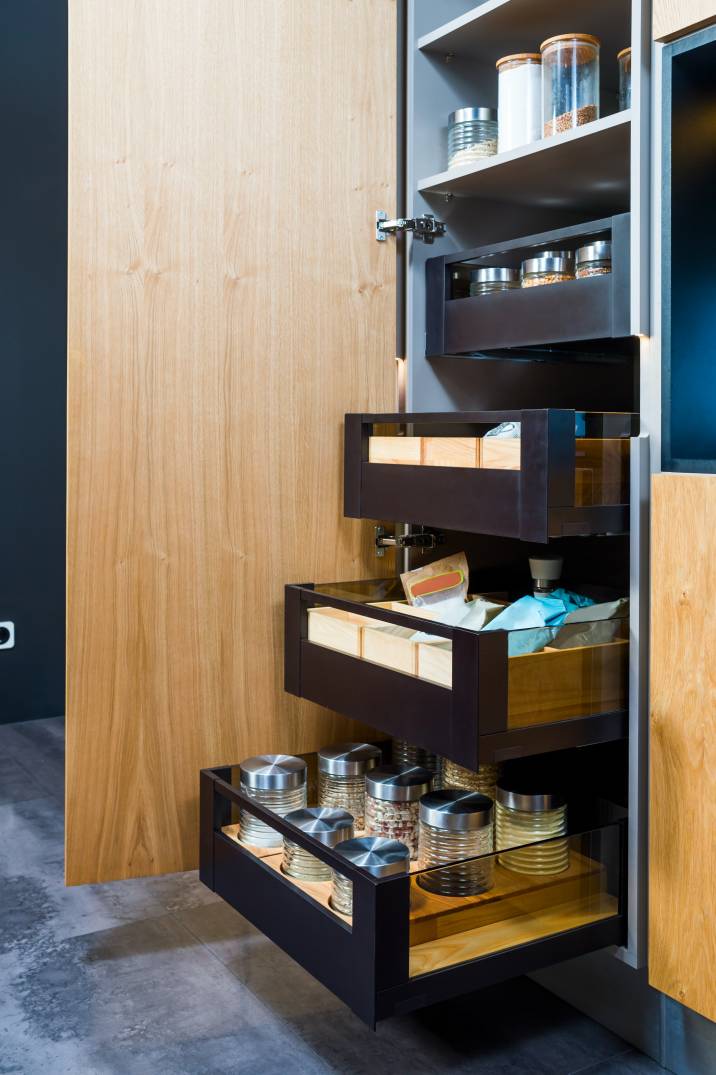
Having a butler's or walk-in pantry is a dream come true for some people. But even with this luxury, don’t get complacent with your pantry cupboard organization. You can still keep groceries and hang pots neatly in this empty area, like floating shelves on the wall. The pantry door is another spot to install additional shelves or racks to store condiments, spices, pot lids, wrapping materials (foil and plastic), and recipe books.
If you’re wondering how to organize deep pantry shelves, apply the same vertical trick. Make partitions for each shelf using your chosen dividers to get instant added storage. You can also install pull-out drawers, making it the perfect space for all your utensils. -
Group similar items together.
In the process of your kitchen pantry organization, it’s a no-brainer that categorizing is a must. Depending on your preferences, you can group items according to their type or use. For example, you can store all baking products in one section, while grains and pasta go elsewhere. You can even have a dedicated room for wine and liquor if you’re a fancy drinker. A kitchen designer can do wonders if you have a budget to splurge.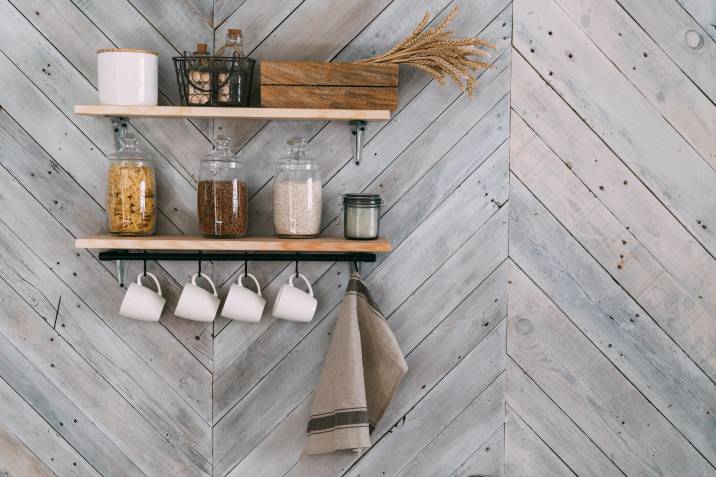
With a budget to spare, why not hire a professional kitchen designer for a total transformation? You can have a dedicated room for wine and liquor if you’re a fancy drinker. Or, if you’d like a little breakfast nook in your kitchen, have cereal and coffee readily available on the allotted shelf space. You can also do the same for your everyday spices and essentials.
While categorizing pantry items, remember to separate close-to-expiring products from the rest. Store them in baskets or containers, and use them in the coming weeks or as soon as possible to avoid unnecessary food waste.
-
Keep your pantry clean.
Once you’ve achieved that organized pantry, it’s crucial to maintain it. Practice the CLAYGO or clean-as-you-go principle. Ensure you put things where you got them to retain their order. For best results, enforce these practices for everyone else in the house.
You can also set up a regular cleaning schedule for your pantry, where you wipe things down and check product expiration dates.
-
Get creative.
Go DIY if you’re on a budget or want to test your skills. Repurpose cans and transform them into neat-looking jars for storage. Paint the wall with neutral tones to go easy on the eyes. Take an old crate and turn it into a basket. Refurbish old drawers that you may have around the house.
You can also hang a chalkboard on the wall to set your weekly meal plan. Use magazine racks to store canned goods. Place a basket full of snacks as a centerpiece for easy munching. Make your printable pantry inventory to know which goods are running low, and write up your shopping list in a breeze.
Unleash your pantry organization skills
Embarking on your kitchen makeover, big or small, can be daring. With enough time, patience, and suitable materials, you’ll know how to organize a kitchen pantry in a jiffy. But if you’re doubtful about pulling it off alone or need an experienced set of hands, find a trusted organizer from Airtasker today!
FAQs on pantry organization
Most professionals recommend up to 12 inches for depth, whether a high or low shelf. This suggested measurement will help avoid burying too many products, leading to forgetting about them and resulting in food waste.
Most homeowners categorize their pantry by type or function. You can group them as canned goods, spices, snacks, breakfast foods, grains and pasta, baking goods, wet ingredients, etc. Remember to arrange your items according to your lifestyle and needs. Place frequently used items within your reach, while rarely used ones can be tucked away or on the top shelves.
Fix up or avoid an awkward pantry by categorizing your supplies according to their type or use. For example, put dry ingredients together and separate them from wet ones. Baskets, bins, containers, and jars add order and style to your kitchen.
It depends on how many items you have, your total kitchen space, and your overall goal and plans. Some homeowners can finish organizing their pantry in a few hours, especially if they will only rearrange and label. But if they were to install, paint, and do major renovations other than organizing, it could take several days.
Find home organizers, fast
Find a home organizer
Related articles

How to organize your garage
Read more
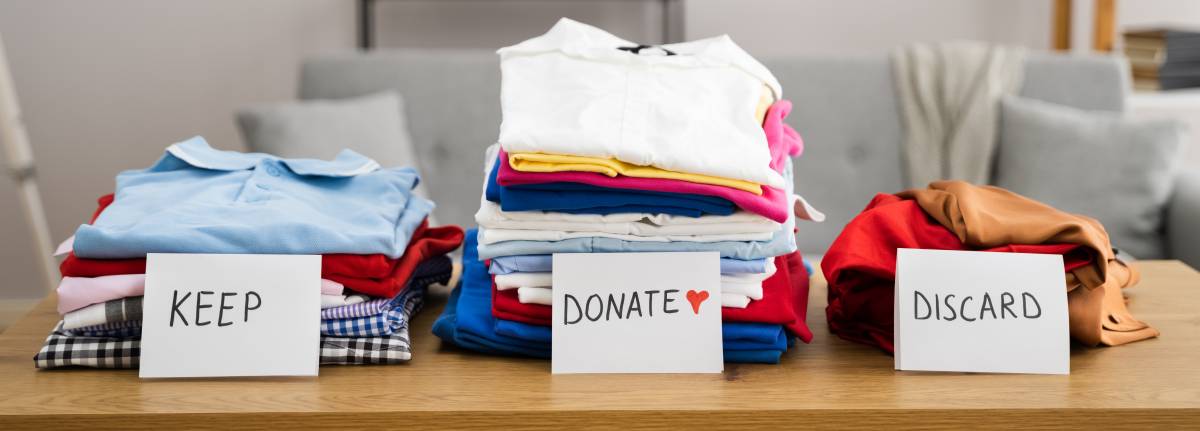
How to declutter before moving house
Read more

How to become a house sitter
Read more
Related price guides

